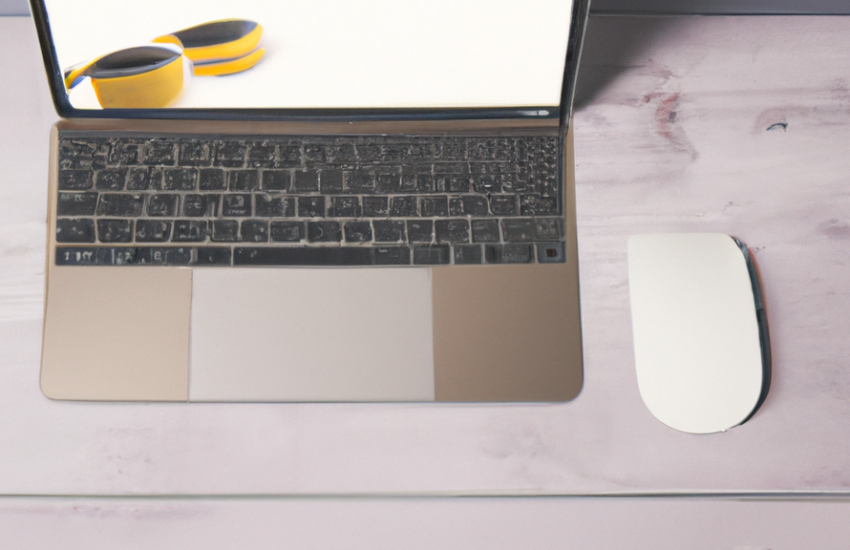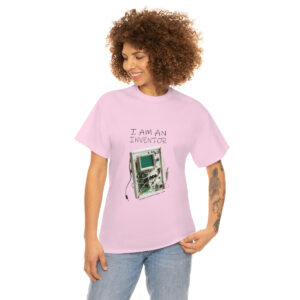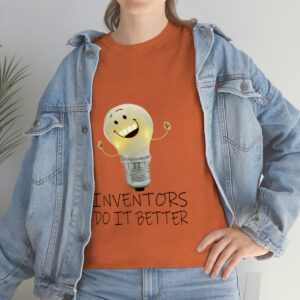HOW TO CREATE A PRODUCT THAT LOOKS AND FEELS GREAT
Creating a product that looks and feels great is a crucial aspect of product design. It is not just about the functionality of the product, but also about the user experience. A product that looks and feels great can attract more customers and increase sales. However, creating such a product is not an easy task. It requires a lot of effort, creativity, and attention to detail. In this blog post, we will discuss some tips on how to create a product that looks and feels great.
From understanding your target audience to choosing the right materials, we will cover everything you need to know to create a successful product. So, if you are an inventor or product designer looking to create a product that stands out, keep reading!
Creating a Product That Looks and Feels Great: A Step-by-Step Guide
Creating a product that looks and feels great is a crucial aspect of product design. It is not enough to have a product that functions well; it must also be visually appealing and tactilely satisfying. In this article, we will explore the steps you can take to create a product that looks and feels great.
Step 1: Define Your Target Audience
The first step in creating a product that looks and feels great is to define your target audience. Who are you designing the product for? What are their needs and preferences?
Understanding your target audience will help you create a product that resonates with them. For example, if you are designing a product for children, you may want to use bright colors and fun shapes. If you are designing a product for professionals, you may want to use sleek, modern designs.
Step 2: Research Your Competition
Once you have defined your target audience, it is important to research your competition. What products are already on the market that cater to your target audience? What do these products look like? What features do they offer?
By researching your competition, you can identify gaps in the market and opportunities to differentiate your product. You can also gain inspiration for your own product design.
Step 3: Create a Prototype
Once you have a clear understanding of your target audience and competition, it is time to create a prototype. A prototype is a preliminary model of your product that allows you to test and refine your design.
When creating a prototype, it is important to focus on both the look and feel of the product. The look of the product includes its visual design, such as its color, shape, and texture. The feel of the product includes its tactile design, such as its weight, texture, and ergonomics.
Step 4: Test Your Prototype
After creating a prototype, it is important to test it with your target audience. This will allow you to gather feedback and make any necessary adjustments to your design.
When testing your prototype, it is important to focus on both the look and feel of the product. Ask your testers how they feel about the visual design of the product, as well as its tactile design. Are the colors appealing? Is the texture pleasing to the touch? Is the weight comfortable to hold?
Step 5: Refine Your Design
Based on the feedback you receive from your testers, it is time to refine your design. This may involve making changes to the visual design of the product, such as adjusting the color or shape. It may also involve making changes to the tactile design of the product, such as adjusting the weight or texture.
When refining your design, it is important to keep your target audience in mind. Make sure that any changes you make align with their needs and preferences.
Step 6: Finalize Your Design
Once you have refined your design, it is time to finalize it. This involves creating a final version of your product that is ready for production.
When finalizing your design, it is important to pay attention to the details. Make sure that all aspects of the product, from its visual design to its tactile design, are polished and refined.
Step 7: Choose the Right Materials
Choosing the right materials is an important aspect of creating a product that looks and feels great. The materials you choose will impact both the visual design and tactile design of your product.
When choosing materials, it is important to consider factors such as durability, texture, and color. Make sure that the materials you choose are high-quality and align with the needs and preferences of your target audience.
Step 8: Work with a Skilled Manufacturer
Working with a skilled manufacturer is crucial to creating a product that looks and feels great. A skilled manufacturer will have the expertise and equipment necessary to bring your design to life.
When choosing a manufacturer, it is important to consider factors such as their experience, reputation, and capabilities. Make sure that the manufacturer you choose has a track record of producing high-quality products and can meet your specific needs.
Step 9: Test Your Final Product
Before launching your product, it is important to test the final version to ensure that it meets your standards for both visual design and tactile design. This may involve conducting quality control tests or having a focus group test the product.
By testing your final product, you can identify any issues or areas for improvement before launching it to the market.
Step 10: Launch Your Product
Once you have tested your final product and are satisfied with its design, it is time to launch it to the market. This involves creating a marketing strategy and getting your product in front of your target audience.
When launching your product, it is important to focus on both the visual design and tactile design. Make sure that your marketing materials showcase the product’s visual appeal, and consider offering samples or demos to allow potential customers to experience the product’s tactile design.
In conclusion, creating a product that looks and feels great is a multi-step process that involves defining your target audience, researching your competition, creating a prototype, testing your prototype, refining your design, finalizing your design, choosing the right materials, working with a skilled manufacturer, testing your final product, and launching your product. By following these steps, you can create a product that not only functions well but also resonates with your target audience and stands out in the market.
- UX vs. UI Design: How your product looks is not the same as how it …
Jun 24, 2021 … Strong UX enhances an experience by making a product or service more accessible, … “Design is not just what it looks like and feels like. - 22 Things to Know to Create the Best Care Routine for Your Hair Type
Nov 20, 2019 … Plus, it shouldn’t leave strands feeling stiff. Pomade. For a long-lasting, super shiny look, opt for pomade. This styling product should be … - 7 Step Product Development Process Explained (2023)
Nov 25, 2022 … Excited about starting a business, but not sure where to start? This free, comprehensive guide will teach you how to find great, newly trending … - How to Get a Thicker Lawn and Keep It!
… lusher lawn that looks great to the eye and feels great under bare feet. … Overseeding is simply sowing grass seed into existing grass to make thin … - Brand Identity: How to Develop a Unique & Memorable Brand in 2023
Oct 5, 2022 … Having a strong brand is crucial when differentiating yourself from … how you communicate your product, and what you want people to feel … - How To Choose a Facial Moisturizer for Your Skin Type | CeraVe
These simple, yet effective products help build a strong foundation for skin that looks and feels healthy, smooth, and hydrated. However, moisturizers are … - 5 Best Olaplex Products of 2022 to Enhance the Look and Feel of …
Feb 25, 2022 … The best Olaplex product will enhance the shine of your hair while smoothing frizz and battling brittleness. Allure readers and staffers … - Design principle: Aesthetics. The power of beauty in design | by …
Apr 23, 2017 … Good looking products and user interface are perceived as more valuable and having more … Making things look and feel simple and stable. - What is User Experience (UX) Design? | IxDF
Products that provide a great user experience (e.g., the iPhone) are thus designed … Similarly, UX designers don’t just focus on creating usable products; … - Protect Your Product’s Look and Feel from Imitators
Protect Your Product’s Look and Feel from Imitators … registered as a trademark or not, is the best way to ensure that your brand is associated with it.
Interesting tidbits about How to Create a Product that Looks and Feels Great
- The first step in product design is identifying a need or problem that the product can solve.
- Research and analysis of the market, competition, and target audience are crucial for successful product design.
- Prototyping and testing are important steps in refining a product’s design before it goes to market.
- User experience (UX) design focuses on creating products that are easy to use, intuitive, and enjoyable for users.
- Industrial designers often work closely with engineers to ensure that their designs can be manufactured efficiently and cost-effectively.
- Sustainability is becoming an increasingly important consideration in modern product design as consumers demand eco-friendly options.
- Many successful products have been created by improving upon existing designs rather than starting from scratch with a completely new idea.
- Intellectual property protection through patents or trademarks is essential for inventors seeking to profit from their creations without fear of copycats stealing their ideas

Are you ready to become an inventor?
Getting your idea out of your head and into your hands is only the first in a long set of steps towards becoming a successful inventor.

First Steps To A Successful Invention
At Invention Therapy, we believe that the power of the internet makes it easier than you think to turn your invention idea into a reality. In most cases, you can build a prototype and start manufacturing a product on your own. Changing your way of thinking can be difficult. Being an inventor requires you to balance your passion with the reality of having to sell your products for a profit. After all, if we can't make a profit, we won't be able to keep the lights on and continue to invent more amazing things!Please subscribe to our Youtube Channel!




